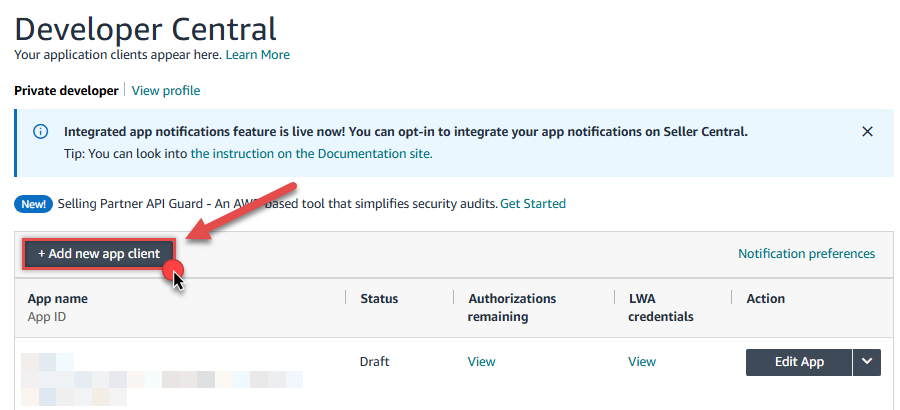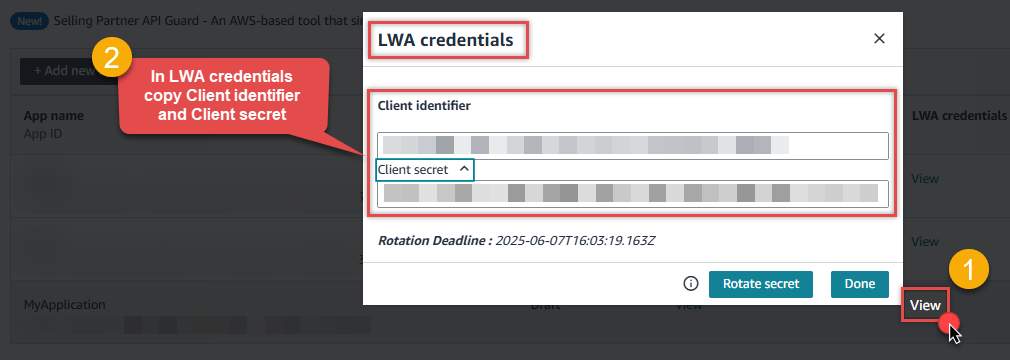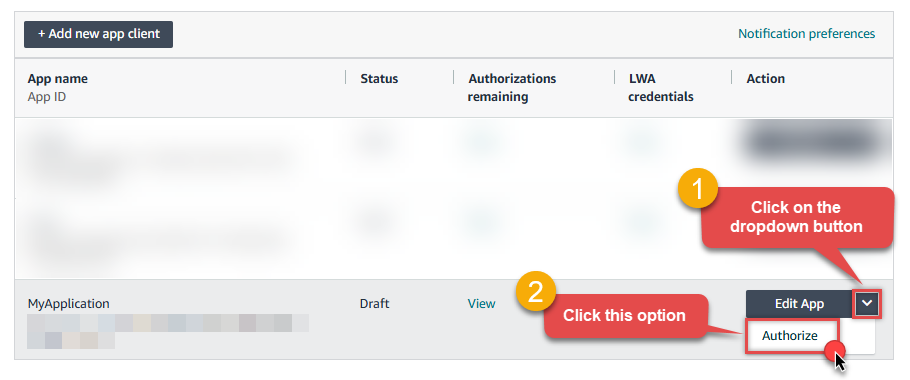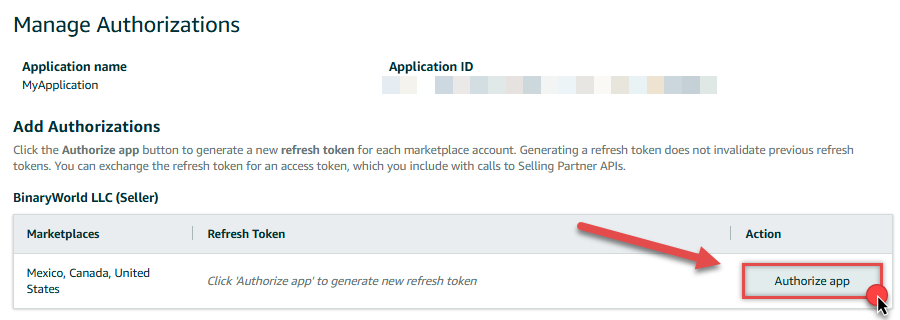Amazon Selling Partner (SP-API) Connector for SSAS
Amazon Selling Partner Connector (SP-API) can be used to integrated SP-API that helps Amazon sellers to programmatically exchange data on listings, orders, payments, reports, and more.
In this article you will learn how to quickly and efficiently integrate Amazon Selling Partner (SP-API) data in SSAS without coding. We will use high-performance Amazon Selling Partner (SP-API) Connector to easily connect to Amazon Selling Partner (SP-API) and then access the data inside SSAS.
Let's follow the steps below to see how we can accomplish that!
Amazon Selling Partner (SP-API) Connector for SSAS is based on ZappySys API Driver which is part of ODBC PowerPack. It is a collection of high-performance ODBC drivers that enable you to integrate data in SQL Server, SSIS, a programming language, or any other ODBC-compatible application. ODBC PowerPack supports various file formats, sources and destinations, including REST/SOAP API, SFTP/FTP, storage services, and plain files, to mention a few.
Create Data Source in Data Gateway based on ZappySys API Driver
In this section we will create a data source for Amazon Selling Partner (SP-API) in Data Gateway. Let's follow these steps to accomplish that:
-
Download and install ODBC PowerPack.
-
Search for
gatewayin Windows Start Menu and open ZappySys Data Gateway Configuration:
-
Go to Users tab and follow these steps to add a Data Gateway user:
- Click Add button
-
In Login field enter username, e.g.,
john - Then enter a Password
- Check Is Administrator checkbox
- Click OK to save

-
Now we are ready to add a data source:
- Click Add button
- Give Datasource a name (have it handy for later)
- Then select Native - ZappySys API Driver
- Finally, click OK
AmazonSellingPartnerSpApiDSNZappySys API Driver
-
When the Configuration window appears give your data source a name if you haven't done that already, then select "Amazon Selling Partner (SP-API)" from the list of Popular Connectors. If "Amazon Selling Partner (SP-API)" is not present in the list, then click "Search Online" and download it. Then set the path to the location where you downloaded it. Finally, click Continue >> to proceed with configuring the DSN:
AmazonSellingPartnerSpApiDSNAmazon Selling Partner (SP-API)
-
Now it's time to configure the Connection Manager. Select Authentication Type, e.g. Token Authentication. Then select API Base URL (in most cases, the default one is the right one). More info is available in the Authentication section.
Amazon Selling Partner (SP-API) authentication
Amazon Sellers can use SP-API to set up private integrations and build solutions exclusively for their Amazon store. Private app is available only to your organization and is self-authorized. A private developer builds application(s) that integrate their own company with Amazon APIs. [API reference]
Perform the following steps to authenticate calls using Amazon SP-API Private app:
- Register as an Amazon Private SP-API Developer. You may need to wait for a day or two to get approved (check approval status).
-
Once your developer account is approved,
login to your account, visit developer console
and click Add new app client button to create a Private app:

-
Continue by naming your application in the App name field,
choose
SP APIas API Type, and select the Roles for your app (i.e. permissions):
-
Once you do that, click View link in LWA credentials column to
copy Client identifier and Client secret (we will use them later):

-
Now it's time to Authorize your app:

-
Finish authorizing it by presing Authorize app button:

-
Finally, copy the Refresh Token (we will use it in the next step):

-
Now go to SSIS package or ODBC data source and use Private app authentication configuration:
- In the ClientId field paste the Client identifier value you copied in the previous step.
- In the ClientSecret field paste the Client secret value you copied in the previous step.
- Leave the default value in the TokenUrl field.
- In the Refresh Token field paste the Refresh Token value you copied in the previous step.
- Click Test Connection to confirm the connection is working.
- Done! Now you are ready to use Amazon Selling Partner (SP-API) Connector!
API Connection Manager configuration
Just perform these simple steps to finish authentication configuration:
-
Set Authentication Type to
Private app [OAuth] - Optional step. Modify API Base URL if needed (in most cases default will work).
- Fill in all the required parameters and set optional parameters if needed.
- Press Generate Token button to generate the tokens.
- Finally, hit OK button:
AmazonSellingPartnerSpApiDSNAmazon Selling Partner (SP-API)Private app [OAuth]https://sellingpartnerapi-na.amazon.comRequired Parameters ClientId Fill-in the parameter... ClientSecret Fill-in the parameter... TokenUrl Fill-in the parameter... Optional Parameters TokenUIMode OnlyRefreshToken AuthUrl (Do not Use for Private app - Self Authorization) https://sellercentral.amazon.com/apps/authorize/consent?application_id=[YOUR-APPLICATION-ID]&version=beta OrdersApiVersion v0 SellerApiVersion v1 ShippingApiVersion v1 ServicesApiVersion v1 FbaApiVersion v1 SalesApiVersion v1 ReportsApiVersion 2021-06-30 ProductsFeesApiVersion v0 ProductPricingApiVersion v0 CatalogItemsApiVersion 2022-04-01 VendorOrdersApiVersion v1 RetryMode RetryWhenStatusCodeMatch RetryStatusCodeList 429 RetryCountMax 5 RetryMultiplyWaitTime True 
-
Once the data source connection has been configured, it's time to configure the SQL query. Select the Preview tab and then click Query Builder button to configure the SQL query:
ZappySys API Driver - Amazon Selling Partner (SP-API)Amazon Selling Partner Connector (SP-API) can be used to integrated SP-API that helps Amazon sellers to programmatically exchange data on listings, orders, payments, reports, and more.AmazonSellingPartnerSpApiDSN
-
Start by selecting the Table or Endpoint you are interested in and then configure the parameters. This will generate a query that we will use in SSAS to retrieve data from Amazon Selling Partner (SP-API). Hit OK button to use this query in the next step.
SELECT * FROM Orders --WHERE AmazonOrderId='902-1845936-5435065' WITH( CreatedAfter='1900-01-01T00:00:00' -- , CreatedBefore='1900-01-01T00:00:00' -- , LastUpdatedAfter='1900-01-01T00:00:00' -- , LastUpdatedBefore='1900-01-01T00:00:00' -- , OrderStatuses='Pending~Unshipped~PartiallyShipped~PendingAvailability~Shipped~Canceled~Unfulfillable' -- , MarketplaceIds='ATVPDKIKX0DER~A2Q3Y263D00KWC~A2EUQ1WTGCTBG2' -- , FulfillmentChannels='AFN~MFN' -- , PaymentMethods='COD~CVS~Other' -- , AmazonOrderIds='1111111,222222,333333' ) --CONNECTION( -- ServiceUrl='https://sellingpartnerapi-na.amazon.com' --) Some parameters configured in this window will be passed to the Amazon Selling Partner (SP-API) API, e.g. filtering parameters. It means that filtering will be done on the server side (instead of the client side), enabling you to get only the meaningful data
Some parameters configured in this window will be passed to the Amazon Selling Partner (SP-API) API, e.g. filtering parameters. It means that filtering will be done on the server side (instead of the client side), enabling you to get only the meaningful datamuch faster . -
Now hit Preview Data button to preview the data using the generated SQL query. If you are satisfied with the result, use this query in SSAS:
ZappySys API Driver - Amazon Selling Partner (SP-API)Amazon Selling Partner Connector (SP-API) can be used to integrated SP-API that helps Amazon sellers to programmatically exchange data on listings, orders, payments, reports, and more.AmazonSellingPartnerSpApiDSNSELECT * FROM Orders --WHERE AmazonOrderId='902-1845936-5435065' WITH( CreatedAfter='1900-01-01T00:00:00' -- , CreatedBefore='1900-01-01T00:00:00' -- , LastUpdatedAfter='1900-01-01T00:00:00' -- , LastUpdatedBefore='1900-01-01T00:00:00' -- , OrderStatuses='Pending~Unshipped~PartiallyShipped~PendingAvailability~Shipped~Canceled~Unfulfillable' -- , MarketplaceIds='ATVPDKIKX0DER~A2Q3Y263D00KWC~A2EUQ1WTGCTBG2' -- , FulfillmentChannels='AFN~MFN' -- , PaymentMethods='COD~CVS~Other' -- , AmazonOrderIds='1111111,222222,333333' ) --CONNECTION( -- ServiceUrl='https://sellingpartnerapi-na.amazon.com' --) You can also access data quickly from the tables dropdown by selecting <Select table>.A
You can also access data quickly from the tables dropdown by selecting <Select table>.AWHEREclause,LIMITkeyword will be performed on the client side, meaning that thewhole result set will be retrieved from the Amazon Selling Partner (SP-API) API first, and only then the filtering will be applied to the data. If possible, it is recommended to use parameters in Query Builder to filter the data on the server side (in Amazon Selling Partner (SP-API) servers). -
Click OK to finish creating the data source.
-
Very important step. Now, after creating or modifying the data source make sure you:
- Click the Save button to persist your changes.
- Hit Yes, once asked if you want to restart the Data Gateway service.
This will ensure all changes are properly applied:
 Skipping this step may result in the new settings not taking effect and, therefore you will not be able to connect to the data source.
Skipping this step may result in the new settings not taking effect and, therefore you will not be able to connect to the data source.
Read Amazon Selling Partner (SP-API) data in SSAS cube
With the data source created in the Data Gateway (previous step), we're now ready to read Amazon Selling Partner (SP-API) data in an SSAS cube. Before we dive in, open Visual Studio and create a new Analysis Services project. Then, you're all set!
Create data source based on ZappySys Data Gateway
Let's start by creating a data source for a cube, based on the Data Gateway's data source we created earlier. So, what are we waiting for? Let's do it!
-
Create a new data source:

-
Once a window opens,
select Create a data source based on an existing or new connection option and
click New...:

-
Here things become a little complicated, but do not despair, it's only for a little while.
Just perform these little steps:
- Select Native OLE DB\SQL Server Native Client 11.0 as provider.
- Enter your Server name (or IP address) and Port, separated by a comma.
- Select SQL Server Authentication option for authentication.
- Input User name which has admin permissions in the ZappySys Data Gateway.
- In Database name field enter the same data source name you use in the ZappySys Data Gateway.
- Hopefully, our hard work is done, when we Test Connection.
AmazonSellingPartnerSpApiDSNAmazonSellingPartnerSpApiDSN If SQL Server Native Client 11.0 is not listed as Native OLE DB provider, try using these:
If SQL Server Native Client 11.0 is not listed as Native OLE DB provider, try using these:- Microsoft OLE DB Driver for SQL Server
- Microsoft OLE DB Provider for SQL Server
-
Indeed, life is easy again:

Add data source view
We have data source in place, it's now time to add a data source view. Let's not waste a single second and get on to it!
-
Start by right-clicking on Data Source Views and then choosing New Data Source View...:

-
Select the previously created data source and click Next:

-
Ignore the Name Matching window and click Next.
-
Add the tables you will use in your SSAS cube:
 For cube dimensions, consider creating a Virtual Table in the Data Gateway's data source. Use the
For cube dimensions, consider creating a Virtual Table in the Data Gateway's data source. Use theDISTINCTkeyword in theSELECTstatement to get unique values from the facts table, like this:SELECT DISTINCT Country FROM CustomersFor demonstration purposes we are using sample tables which may not be available in Amazon Selling Partner (SP-API). -
Review your data source view and click Finish:

-
Add the missing table relationships and you're done!

Create cube
We have a data source view ready to be used by our cube. Let's create one!
-
Start by right-clicking on Cubes and selecting New Cube... menu item:

-
Select tables you will use for the measures:

-
And then select the measures themselves:

-
Don't stop and select the dimensions too:

-
Move along and click Finish before the final steps:

-
Review your cube before processing it:

-
It's time for the grand finale! Hit Process... to create the cube:

-
A splendid success!

Execute MDX query
The cube is created and processed. It's time to reap what we sow! Just execute an MDX query and get Amazon Selling Partner (SP-API) data in your SSAS cube:

Actions supported by Amazon Selling Partner (SP-API) Connector
Learn how to perform common Amazon Selling Partner (SP-API) actions directly in SSAS with these how-to guides:
- Download Report File to Local Disk
- Get FBA Inventory Summaries (Fulfilled By Amazon)
- Get Market Place Participations
- Get Order (Single)
- Get Order Items (For Single Order)
- Get Orders
- Get Orders Items (For All Orders **Slow**)
- Get Report Data - Comma Separated File (CSV)
- Get Report Data - JSON File
- Get Report Data - Tab Separated File (TSV)
- Get Report Data - XML File
- Get Report Filters
- Get Report Options
- Get Report Types
- Get Vendor PurchaseOrder Items
- Get Vendor PurchaseOrders
- Search Catalog Items
- Make Generic API Request
- Make Generic API Request (Bulk Write)
Conclusion
In this article we showed you how to connect to Amazon Selling Partner (SP-API) in SSAS and integrate data without any coding, saving you time and effort.
We encourage you to download Amazon Selling Partner (SP-API) Connector for SSAS and see how easy it is to use it for yourself or your team.
If you have any questions, feel free to contact ZappySys support team. You can also open a live chat immediately by clicking on the chat icon below.
Download Amazon Selling Partner (SP-API) Connector for SSAS Documentation












































































